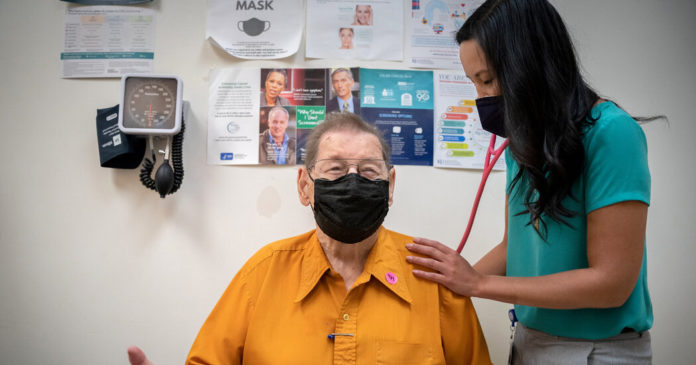Though the number of epidemiologists in state health departments surged during the pandemic, the Centers for Disease Control and Prevention reported on Thursday that states were still far short of the public health workforces that officials said they needed.
The report, based on a survey from early 2021 of state epidemiologists from all 50 states and the District of Columbia, reinforced broader concerns that public health workers across the country are less equipped to respond to a pandemic now than they were at the beginning of 2020.
Even as the number of state epidemiologists grew, especially in fields like the Covid-19 response, staffing in general infectious diseases, chronic diseases, and maternal and child health declined, the C.D.C. said. Epidemiologists are responsible for tracking disease, developing responses, investigating health threats and studying public health services and health care.
And although the number of state epidemiologists grew by 23 percent from 2017 to 2021, to a total of 4,136 positions, fewer states said in 2021 that they had the resources to fully monitor population health issues and to investigate and diagnose hazards that could affect people.
In all, state officials said they needed another 2,196 epidemiologists to provide basic public health services, the survey found.
“The Covid-19 response has strained the U.S. public health system,” the C.D.C. report said. “Workforce and capacity needs remain unmet.”
The federal government has poured money into public health response activities during the pandemic, including $7.66 billion from the American Rescue Plan Act in 2021, the C.D.C. said. It is not clear how states’ public health needs or staffing levels had changed since the survey was conducted in 2021.
The C.D.C. warned that public health needed predictable levels of funding over longer periods.
Public health was often underfunded and neglected even before the pandemic. A combination of unpredictable funding, reduced authority to impose health orders and staffing problems have made the work of state and local public health departments all the more difficult.
Funding for epidemiology was fragile, the C.D.C. reported. In 2021, epidemiology activities relied on federal money for 85 percent of their budgets, but states were unsure how long that money would last: 39 percent of the federal money was designated for Covid-19 work over limited time periods.
The C.D.C. report tracked epidemiology positions only in state health departments, and not in other state agencies.
Among the fields in which states reported being the shortest-staffed were genomics, mental health, oral health and occupational health.
Source : Nytimes














